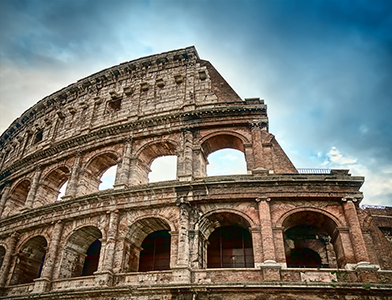Most scholars attribute the earliest formal cremations to the Stone Age (around 3000 B.C.) With the first evidence being in Europe and the Near East. Urn (in the form of decorative pottery) was discovered in Russia. A partially cremated body also was found in Australia.
There was evidence of cremation during the Bronze Age (2500 to 1000 B.C.), the Mycenaean Age (circa 1000 B.C.). It was during this time archaeologists began seeing evidence of elaborate Grecian cremations. By 800 B.C., cremation was being encouraged for both health-related reasons and as a way to respectfully handle soldiers killed in battle.
 Early Romans began widely cremating citizens around 600 B.C. This is where some of the first laws regarding cremation were seen. Not surprising, the Roman Empire also started building monuments (primitive columbariums) as well. During this time, the Jewish and Christian cultures continued to use traditional burial (or entombment).
Early Romans began widely cremating citizens around 600 B.C. This is where some of the first laws regarding cremation were seen. Not surprising, the Roman Empire also started building monuments (primitive columbariums) as well. During this time, the Jewish and Christian cultures continued to use traditional burial (or entombment).
Constantine’s Christianization of the Empire (400 A.D.), almost completely replaced cremation in Europe for the next 1,500 years.
Today’s modern cremation, was attributed to a physician, Sir Thomas Browne in 1658. The first recorded cremation was in 1769 (although conducted illegally in London. Cremation became more prevalent as a dependable cremation chamber (also called a retort) was developed around 1873.
The first North American crematory was attributed to Dr. Julius LeMoyne in Washington, Pennsylvania.
Cremation rates in the United States continue to rise, especially in the area of direct cremation (also called simple cremation). According to the National Funeral Directors Association (NFDA), cremations accounted for 50.2 percent of funerals in 2016, up from 48.5 percent in 2015
A more detailed account of cremation history can be found on the Cremation Association of North America website.


